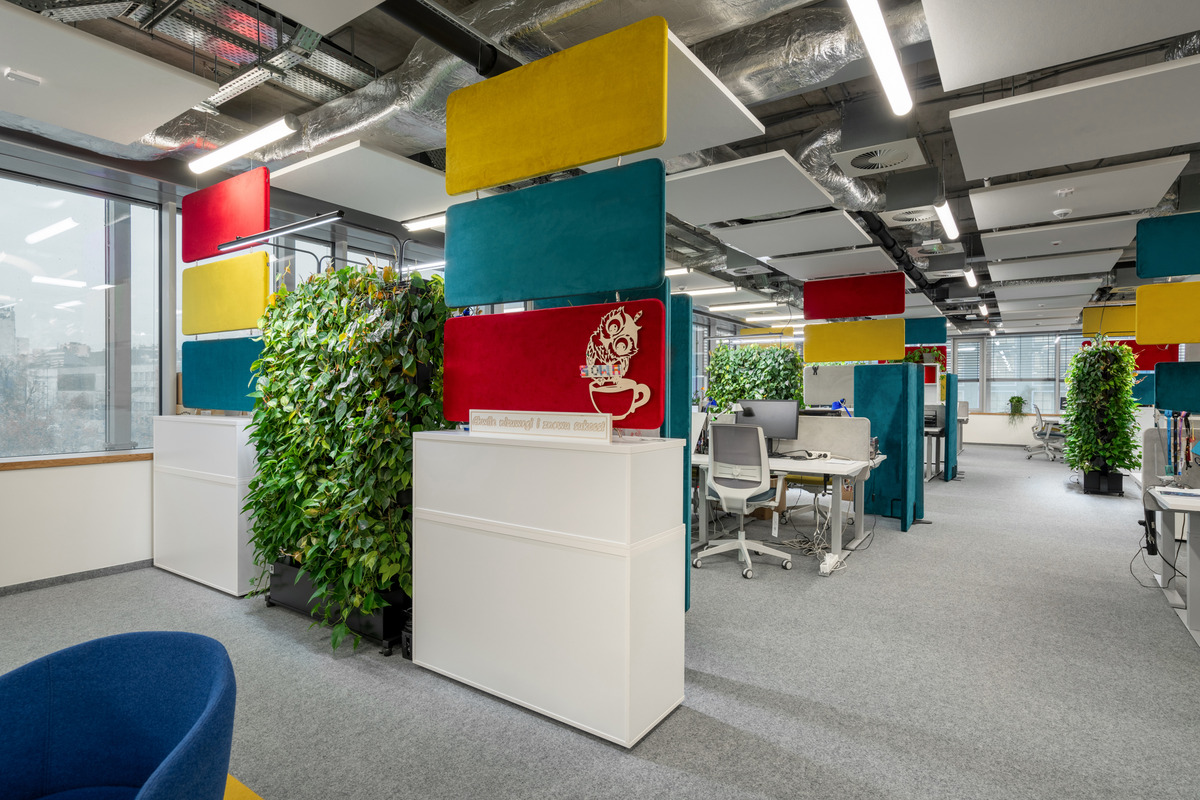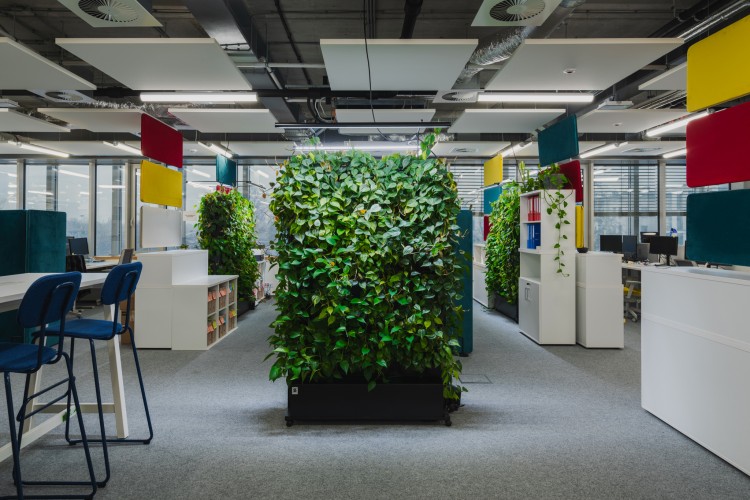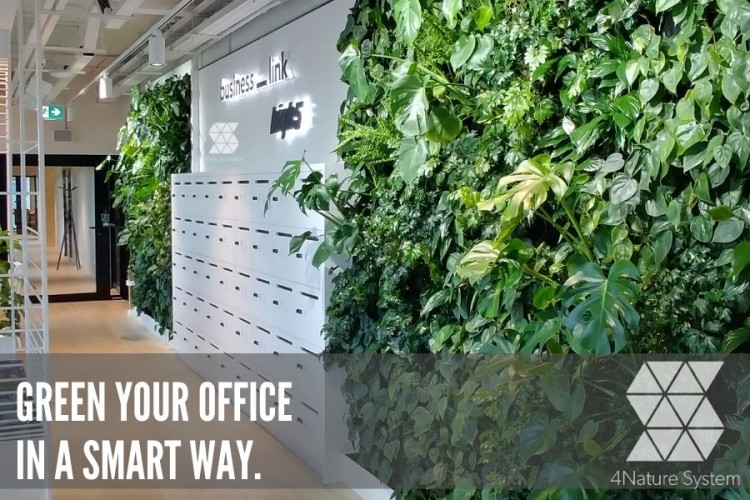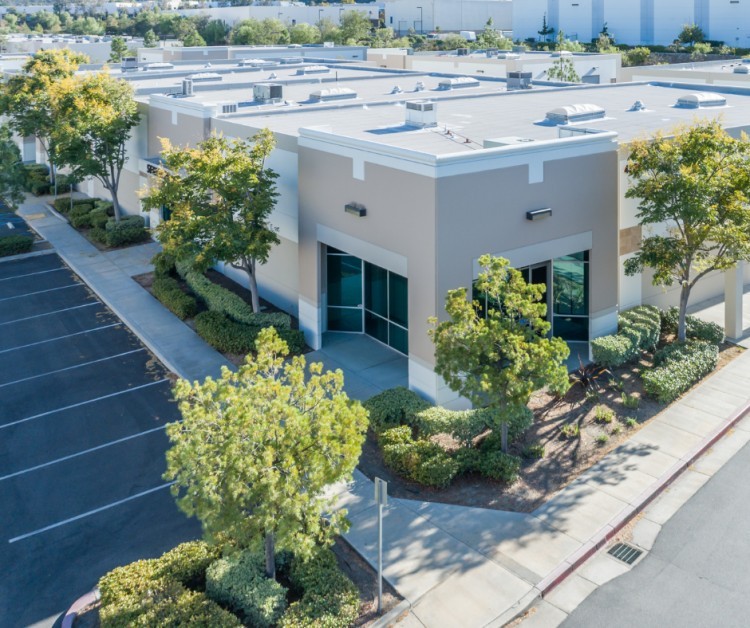Neurodesign in office spaces: How vertical gardens are changing the way we work

Neurodesign is a modern approach to space design based on knowledge from the fields of neurobiology and psychology. Neurodesign studies how the environment affects the human brain, emotions, concentration and well-being. The aim is to create spaces that support productivity, creativity and the well-being of users, including office space users.
Neurodesign – how to create an office where people want to work
In an era of changes related to hybrid work and growing awareness of mental health, the office is no longer just a place to perform duties. It is becoming a space from which users demand more, so that work can be carried out in greater comfort and with better results. Neurodesign is a design approach that utilises knowledge about processes that we do not control on a daily basis. Processes that are beyond our awareness but influence our decisions. Optimal daylight and artificial lighting, friendly acoustics, neutral colours of walls and furnishings, the presence of natural elements, especially plants – these are the basic tools of neurodesign.

I invite you to cooperate
Are you designing an interior from scratch or furnishing an office? Do you advise companies on space arrangement?
Plants in the office – more than just decoration
We already know that introducing plants into office spaces is not just a matter of aesthetics, which appeals to some people but not to others. From a neurodesign perspective, greenery has a measurable effect on our brains:
- It reduces stress levels – contact with nature activates the parasympathetic nervous system, which is responsible for relaxation and regeneration.
- Improves concentration and working memory – looking at plants or being around them promotes focus.
- Greater creativity – studies have shown that employees who have access to greenery generate more unconventional ideas.
- It has a positive effect on well-being – the presence of plants reduces fatigue and improves mood.It has a positive effect on well-being – the presence of plants reduces fatigue and improves mood.
Vertical gardens – a green (r)evolution in the office
A vertical garden, i.e. a vertical wall of plants, is one of the most effective solutions for introducing greenery where space is limited. The shift to a hybrid working model in many companies has also changed the approach to office space. Businesses have learned to use smaller spaces more efficiently by rotating users at workstations. Some of them have changed location, opting for smaller offices and lower rental costs. Smaller does not mean worse – as long as the space is used sensibly, without compromising on standards, ergonomics and the quality of the working environment. Green walls, especially those in the form of modular and mobile structures, allow limited space to be reconciled with the demand for a sustainable, neuro-friendly office.
Thanks to them, we gain:
- optimal use of space – plant structures are installed on vertical surfaces: corridor walls and meeting rooms, above desks or as partition walls, lightly and functionally separating zones,
- impressive visual effect – a wall of greenery in the middle of an office building is unique, transporting you from the city centre to the middle of a forest in seconds,
- natural air filter – plants absorb toxins and optimise humidity – dry air throughout the year is a plague even in the best-designed buildings,
- improved acoustics – plants absorb sound, which promotes concentration in open spaces and reduces anxiety associated with overstimulation and lack of privacy.
If you want to create an office that is not just a place to work, but a place where people want to work, choose solutions that are in line with neurodesign. The user’s mind will recognise a neuro-friendly space, drawing them to an interior where they feel comfortable. The introduction of a vertical garden is an important element of such spaces and a signal that you care about the health and well-being of your employees. It is also an investment in the productivity and creativity of the team and in the image of a modern, conscious company that knows how to turn comfort into efficiency.







